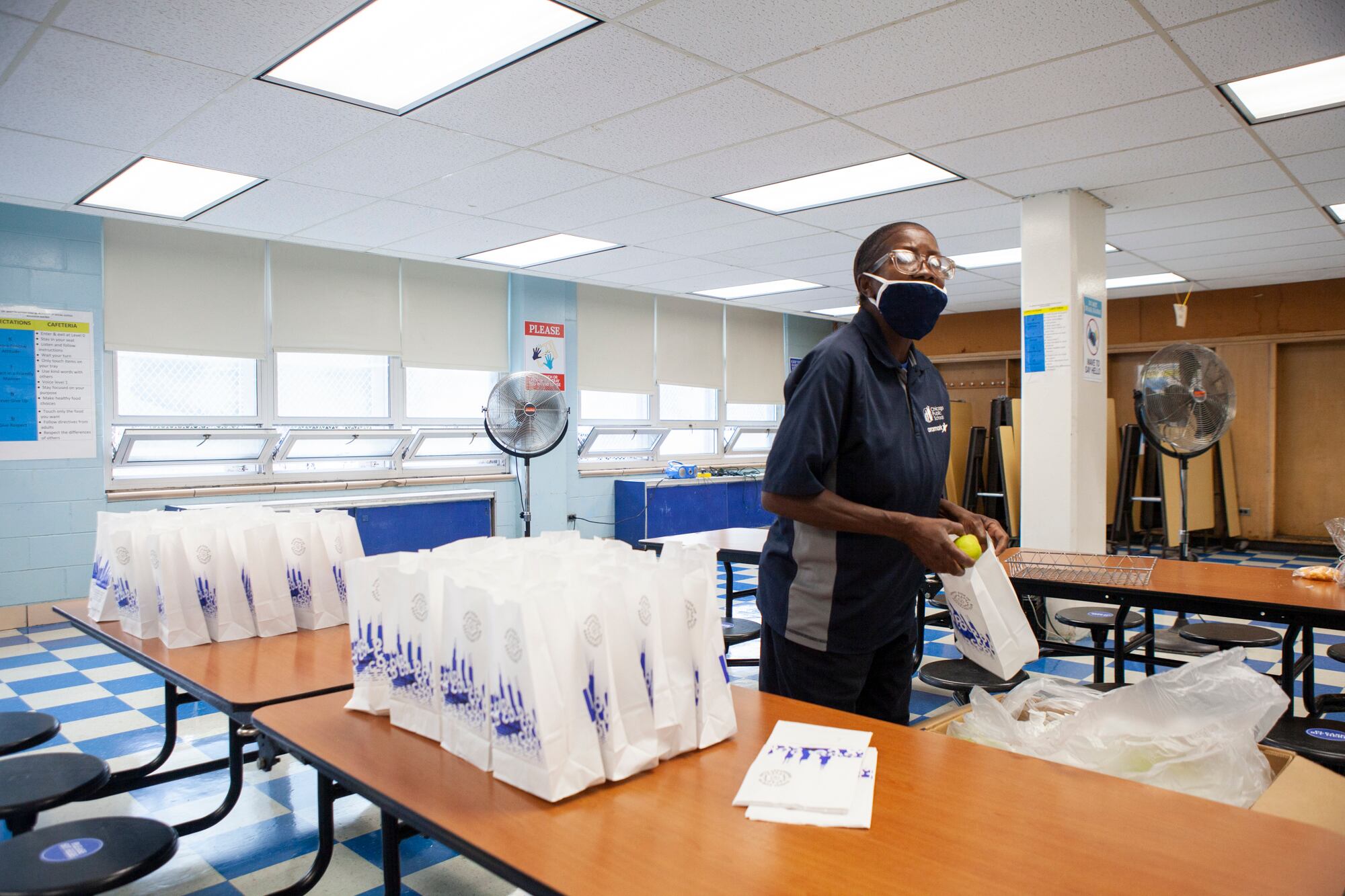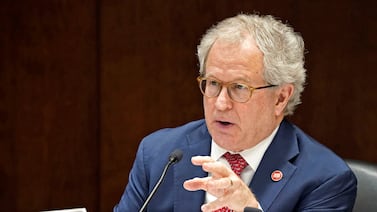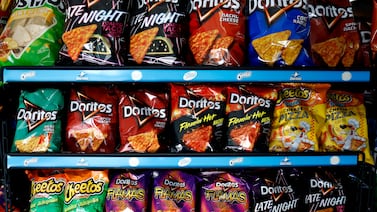Double-digit staffing shortages for days in a row. Classes of 60 to 80 pre-teens combined in the cafeteria and gym with one teacher. Special education assistants pulled to fill in for missing substitutes, and security staff monitoring lunch.
The return to in-person learning hasn’t been so seamless at some Chicago schools.
“Every day feels like a new sort of chaos in our building,” said Madeleine Greene, a seventh grade teacher at a Southwest Side elementary school, describing a worsening staffing crunch. “It severely disrupts climate and culture because students are combined into spaces that don’t have structure” — and spaces that have fewer adults.
School staffing shortages have been a persistent problem this fall in Chicago and across the country. But an uptick in teacher quarantines, missing bus drivers and janitors, substitute shortages, and longer-term vacancies due to burnout has put the squeeze on an already tight staffing situation. Principals have been stepping in as substitutes or filling in for crosswalk duty and teachers such as Greene have given up prep periods to cover other classes and even help with cleaning.
As district leaders try to find solutions for the staffing issues, the post-Thanksgiving spike in COVID cases and the emergence of the omicron variant could further complicate the existing staffing problems.
Because of staffing issues, some school districts nationwide have opted to partially return to remote learning, or shorten the school week to control outbreaks and properly sanitize campuses, but mostly to avoid an exodus of staffers already stretched thin. The crunch has gotten so bad in Detroit that the school district introduced a temporary, four-day school week — an announcement that has generated debate among parents.
Greene, the Southwest Side teacher, worries about the impact on student safety. Combining classes that aren’t typically together can prompt disruptions — even fights between students and make it harder to socially distance. She also worries about burnout among her peers.
“Every day is all hands on deck,” she said. “I don’t know how we sustain this.”
Chicago Public Schools officials have scrambled all fall to relieve the pressure from staffing problems — from bus driver shortages that foiled some transportation routes to substitute shortages. Last month, the district and the teachers union reached a $10 million agreement to boost school staffing. The agreement prioritizes hiring additional full-time substitutes and expanding the substitute teacher pools for the 2021-2022 school year.
A Chicago Public Schools spokesperson said that since Sept. 1, the district has hired more than 100 substitute teachers, bringing the total substitute pool to more than 4,000. In a statement Wednesday, the district said it was using federal COVID-19 relief funds to hire substitutes, part-time seasonal employees, and even school assistants “to ensure safety protocols are met at the school level.”
The district said it continues to work to fill vacancies in permanent positions. As of Dec. 1, Chicago Public Schools had 22,400 teachers on staff with a 2.9% vacancy rate and 12,300 education support staff with 800 vacancies, according to figures provided by the district. The overall vacancy rate has gone down since the start of the year, when Chicago Public Schools reported a 3.3% vacancy rate the first week of school — a stronger staffing position than in previous years.
The December teacher vacancy rate is slightly higher than it was at this time last school year, when it was 2.4%, but lower than in December 2019 when the district and its teachers union were fresh off a strike, data show.
The school district currently has more than 4,400 special education teachers compared to 3,900 in 2019 and said the number of counselors has increased to 770 from 740 over a similar time period.
“CPS is ardently working to attract and hire qualified candidates to fill all of these vacancies,” the district said in a statement.
At a Tuesday evening virtual forum to get input on the district’s budget, one principal said Chicago must start thinking proactively about retaining and supporting educators and other veteran staffers. Jasmine Thurmond, the principal at Dr. Martin Luther King Jr. Academy of Social Justice, a South Side elementary, said staffing challenges have severely tested school leaders this fall.
She commended the district for recent bonuses to attract substitutes and new district hires. As part of the bonus, substitutes now get an extra $420 per month if they fill in 12 or more times. But she said she worries about an impending exodus of more seasoned employees.
“A lot of these folks are burning out at an alarming rate,” she said.
The district should consider financial and other incentives for educators and support staff to boost retention, she said, in response to a question about the district’s most pressing needs this school year.
Outside the classroom, unfilled custodial and crosswalk vacancies are putting pressure on schools, too.
At Goudy Technology Academy, Kristin Brody, vice chair of the local school council, said they’ve “begged” the district and Board of Education for help with staffing issues to ensure students safety during the pandemic.
At the school, which is down two custodial staff members and a crossing guard, teachers, administrators, and students are pitching in to help keep the campus clean. The principal and assistant principal are now the crossing guards, Brody said.
“Our staff is going above and beyond to keep our children safe and educated,” Brody said, “but the levels that we are having to go as families, staff, and students to keep our school clean and safe is not acceptable considering that CPS received (billions) from the federal government to fill these holes.”
The city’s teachers union has voiced the same criticism, arguing the district should immediately direct more COVID relief funds toward ramped up hiring of teachers and substitutes as well as deeper cleans, more testing, and tougher COVID-19 protocols.
The death of a special education assistant at Carnegie Elementary in Woodlawn has brought fresh urgency to lingering safety concerns, union officials said. The teacher, jonL Bush, was diagnosed with COVID-19 on Nov. 23 and died Nov. 26, according to his family and the Cook County Medical Examiner’s office. Speaking this week at a press conference about safety protocols, the educator’s mother, Claudette Bush, remembered her son as someone who loved and was good at his job.
“I’m not just hurt,” she said. “I’m angry.”
The omicron variant could further complicate the existing staffing problems.
The Monday following Thanksgiving, more than 1,300 COVID cases were diagnosed across the city — the most COVID cases detected since Jan 2021, the city’s top health official, Dr. Allison Arwady, said.
As of Tuesday, the city was averaging about 828 cases per day, the health commissioner said.
Similarly, COVID-19 cases have gone up among district staff and students. From Nov. 15-19, 73 adults and 312 students tested positive for COVID-19. The week following Thanksgiving, Nov. 29-Dec. 3, 136 adults and 419 students tested positive for the coronavirus, according to district data.
The rise in cases prompted an increase in students and staff in quarantine.
As of Tuesday, 278 adults and 6,572 students were quarantined, according to latest figures from Chicago Public Schools.
At Carnegie Elementary, where staff and students are mourning the loss of Bush, quarantine numbers have increased from five to 113 since Nov. 27, city data shows. The school has recorded 29 cases since the start of the school year, and 20 of those since Nov. 22.
If you’re having trouble viewing this survey on mobile, go here.
Mila Koumpilova contributed to this report.





